[Author’s Note: This is a non-vegetarian story, cooking and consuming of meat is depicted and described.]
I am by nature a city boy who belongs at the equator, despite being born in the Wisconsin countryside (nine months of bitter winter in a town of 2,100). Of all my theories on luck and the randomness of life, that aspect of my nature is probably why Shenzhen (no winter, thank you) became my home base. Culture both equipped me with nostalgia for my old home’s cold climes and the confidence to brave a “Real Winter”. Thus we decided to use the Winter Holiday 2024 for a trip to Beijing and Tianjin.
For our family, Beijing is on-the-way-to-Tianjin, the sister city that lies barely 30 minutes by high speed rail from the capital. There are reasons why Tianjin is very special to us and Beijing is a bit less exciting, but there is a lot of time to explain later. Our boys were too young to remember earlier visits here so we are reliving some greatest hits to make sure they retain the memories of this trip.
A visitor to Beijing in December should notice three things in this order. First, the wind drives the cold -2 degree air into every corner not buttoned down. Second, driving from the city to the airport, everything has a drab, brownish tint. The ground, the white painted trunks of the leafless trees, the buildings, even the sky. A brownish band circles the horizon, as if the ground is smeared or leaking into the sky in a fight against gravity. This is dust blown in from the west and northern deserts. Beijing and all of Northern China has had to contend with water shortages and desertification for a very long time. Third and last, Beijing is vast, probably your biggest city. Driving from the new airport to the hotel takes an hour, and the hotel is merely on the outskirts. The city centre is another hour by metro or drive.
Which is why our entire plan for the first day in Beijing is just get there. No sightseeing, no tickets to this or that, just waking at five and arriving at three in the afternoon. All we hoped to do was have a memorable dinner on one of the best known and most successful specialities, the signature dish of China, Beijing Duck.
Anticipating lines and delays we quickly bundled up and found the Metro. As an aside, any visitor should rely on the Metro. What the train system loses in physical exertion, a car loses more in rude drivers and endlessly snarled traffic. Thankfully, we found seats much of the way to Qianmen, a lively and old maze of streets meaning “Front Gate”. Nearly every person has their phones out, some sleeping with their phones in hand, like babies who fall asleep holding their favourite toy.
Peking Chamber has many locations in Beijing. We couldn’t help noticing them everywhere over the next few days. The branch at Qianmen was the closest. Anticipating some kind of wait, we tried to arrive early.
At 5:30, the estimated wait time was two hours. We dutifully took our number, A610. There were more than 200 numbers ahead of us, not counting the 1–2 person and 5+ groups.
We stumbled back out into the bitter cold, to avoid thinking about the two hour estimate…but at least I got rehydrated. I get cranky if I’m not fed and watered every so often.
Walking around Qianmen passed an agreeable hour before the cold drove us back to the waiting area, now slightly less crowded. Complimentary snacks and tea softened the monotony of waiting past two hours…to three…the real anxiety stemmed from phones running out of battery. There was plenty of time to people watch and consider why this dish became so famous.
Beijing Duck is one of the world’s famous dishes, as much a part of Beijing as The Palace Museum, The Great Wall, and the Hutong neighbourhoods. The methods and rituals of enjoying the dish is essential to the experience.
Though if one thinks about it, isn’t Nanjing more suited to hosting duck cuisine? There is even a saying about Nanjing, something like, “ducks fly in, but they don’t fly out.” In truth, duck dishes originated in Hangzhou in the 13th century and later became famous in Nanjing. Nanjing used to be the capital, and when that distinction moved to Beijing the aristocracy brought the ducks along. Innovations have made the Beijing Duck that we enjoy distinct and unique to this region since then. The Beijing duck breed has white feathers, and the roasting method moved from a batch method to today’s hanging oven where birds can be cooked individually to order.
Near to the waiting area, as if to at once entice and tease us, the chefs rush around the ovens where we can see the birds prepared and roasted in real time. This one restaurant must consume at last 500, perhaps 1000, ducks in a single day. This is the signature disk and every table will order one.
The ducks staged for roasting have been carefully selected, plucked, and cleaned for perfection. The skin is specially prepared to be removed by blowing air before glazing and hanging for drying. This process starts 24 hours before cooking. The ovens are wood-fired, kind of like a good pizza oven. Every 45 minutes or so a batch comes out and a new line goes in. The finished birds are professionally cut here and delivered to your table.
Speaking of which…
At 21:00 we finally got the call after a flash burst of numbers. We had waited 210 minutes for Beijing’s signature dish and we were going to enjoy the experience.
Ordering other dishes to keep the duck company is normal and for us four hungry people, necessary. We added a couple greens with tofu plus a favourite of mine, 宮保雞丁, Sichuan chicken and peanuts, or as it is most commonly known, Kung-pao chicken. I prefer to just say “spicy chicken”. Their version was good, not too spicy.
Part of the service is explanation of the three ways to eat the sliced skin and meat, demonstrated by a young guy who has absolutely done this before. The first taste is the thin skin of the neck dipped only in white sugar. The combination melts in the mouth.
The second and third ways are wrapped in a very thin pancake. The duck is dipped in either salty soybean paste or sweet and sour sauce. Combine the salty flavour with garlic, thin onion, and cucumber and the sweet and sour with watermelon and honeydew melon.
He made it look easy, using only the chopsticks to separate the pancake from the layered paper, wrapping all without hesitation or fingers. I’ve eaten this more times them I can count and I’m quite good with chopsticks, but the pancake was so transparently thin that I made a mess of it every time.
I liked all three combinations, the sweet and sour was the most surprising. The flavours stand out strongly.
You may wonder what happens to the remainder of the duck. Here in the North, the meat is often used to make a bone broth soup with cabbage, tofu, and glass noodle. I thought it was good. Or the meat can be stir-fried with bitter melon, not really my thing. I prefer the southern style that leaves more meat with the skin, leaving less to use in other dishes.
Too quickly our time passed, and we were feeling so good that two desserts were deemed acceptable. The whitish cubes are made with lima beans — easy to digest and not too sweet, and the duck shaped pastries are filled with dates.
A team committed to the mission will succeed at all costs. We had risen before 5am, braved planes, trains, and automobiles, plus the cold and the Peking Chamber Queue of Exceeding Endurance, and emerged victorious. Confident in ourselves and our family, we left with the staff to get some sleep before diving into another day.

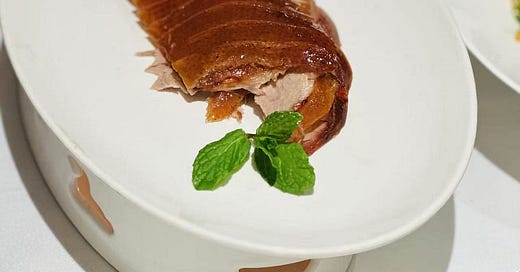



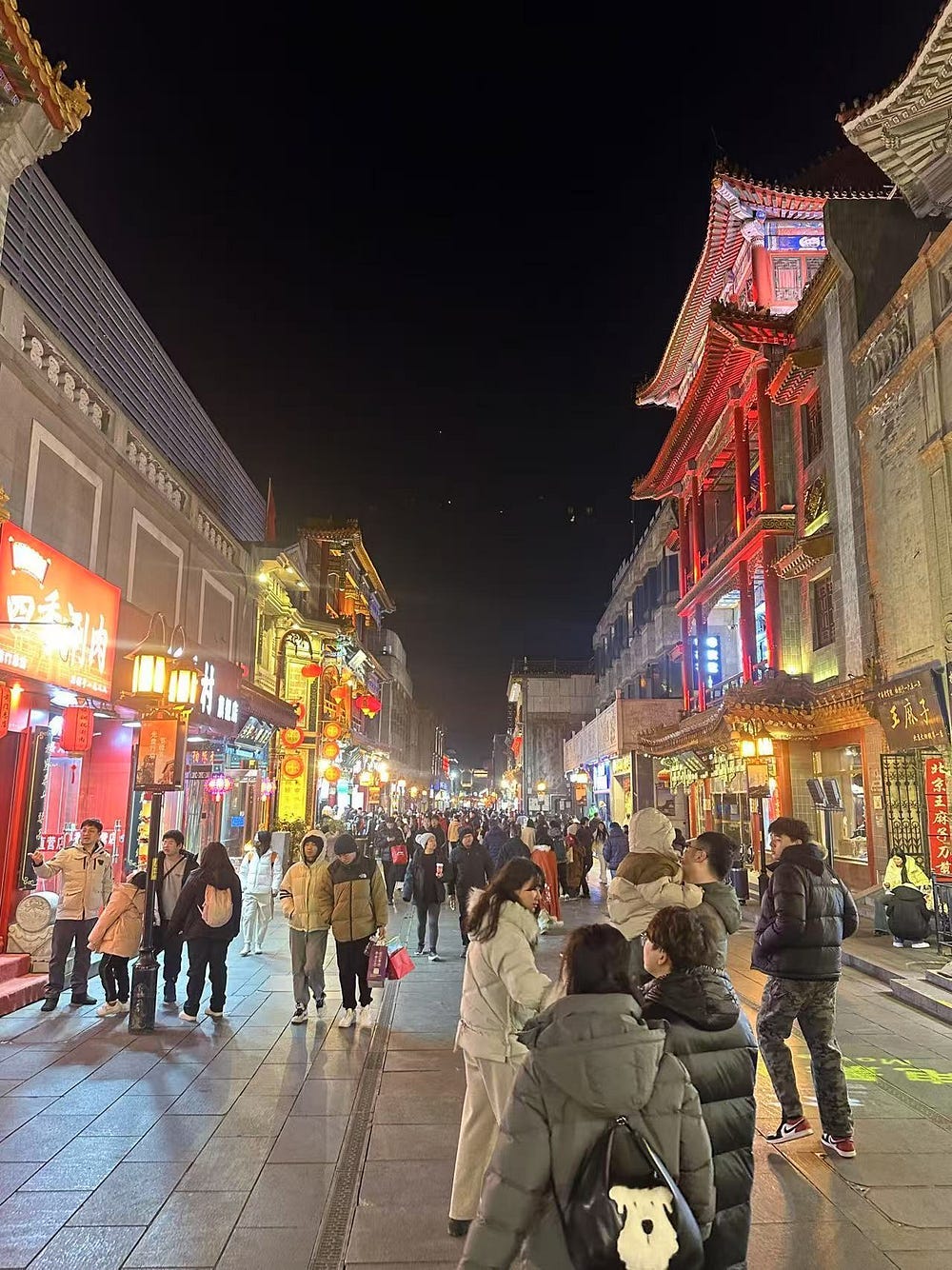
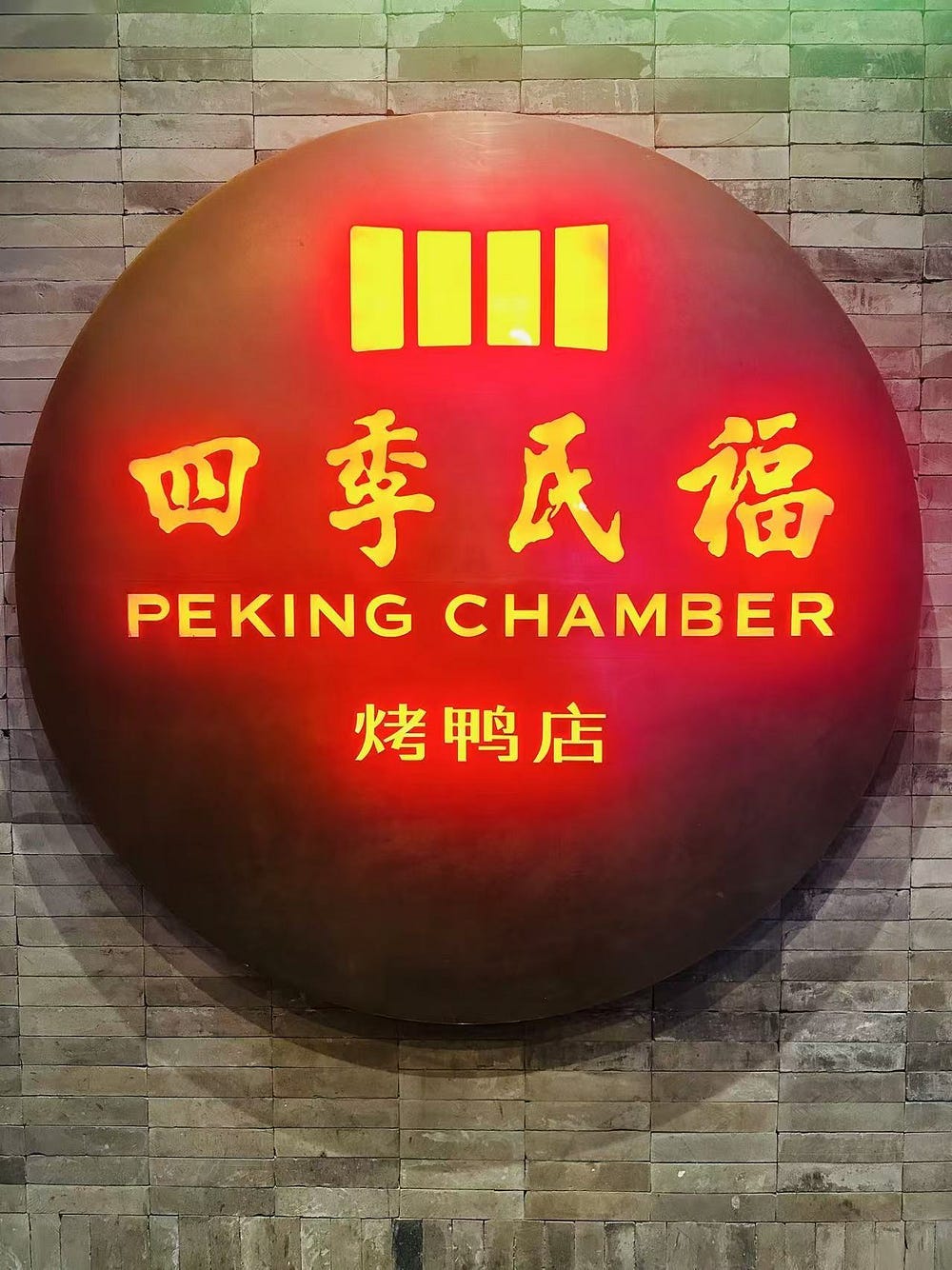
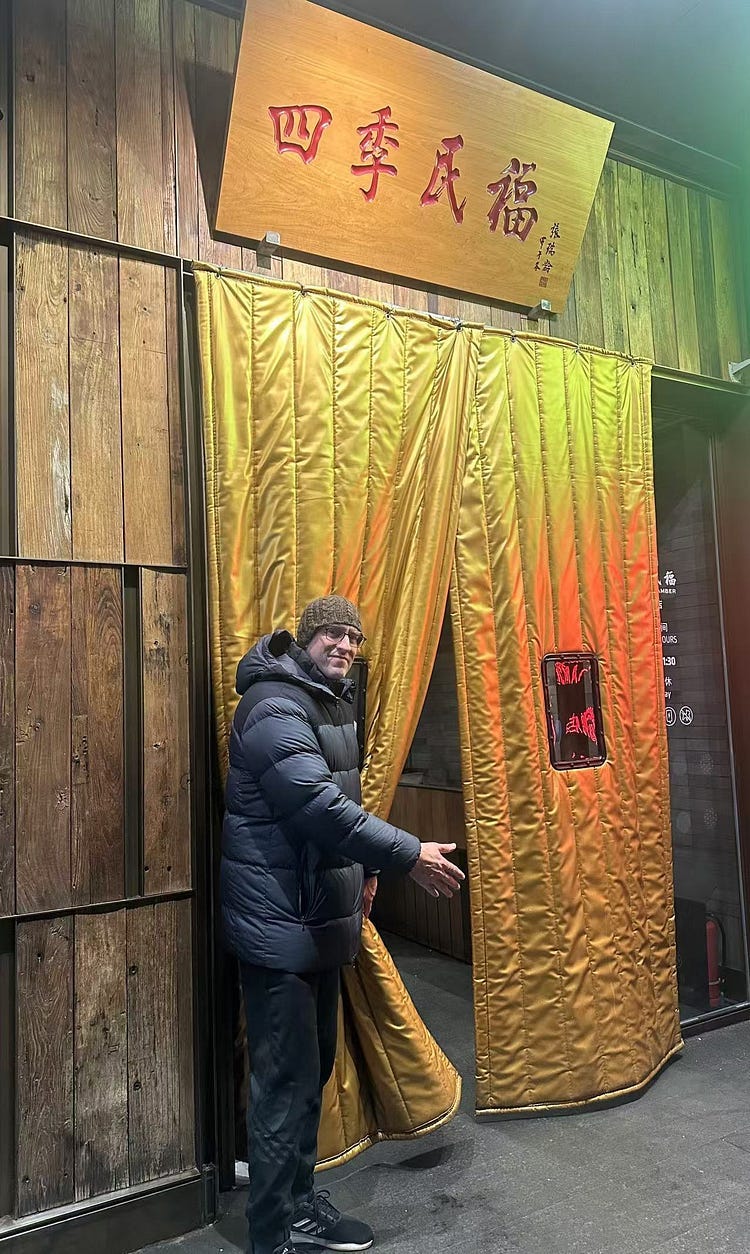



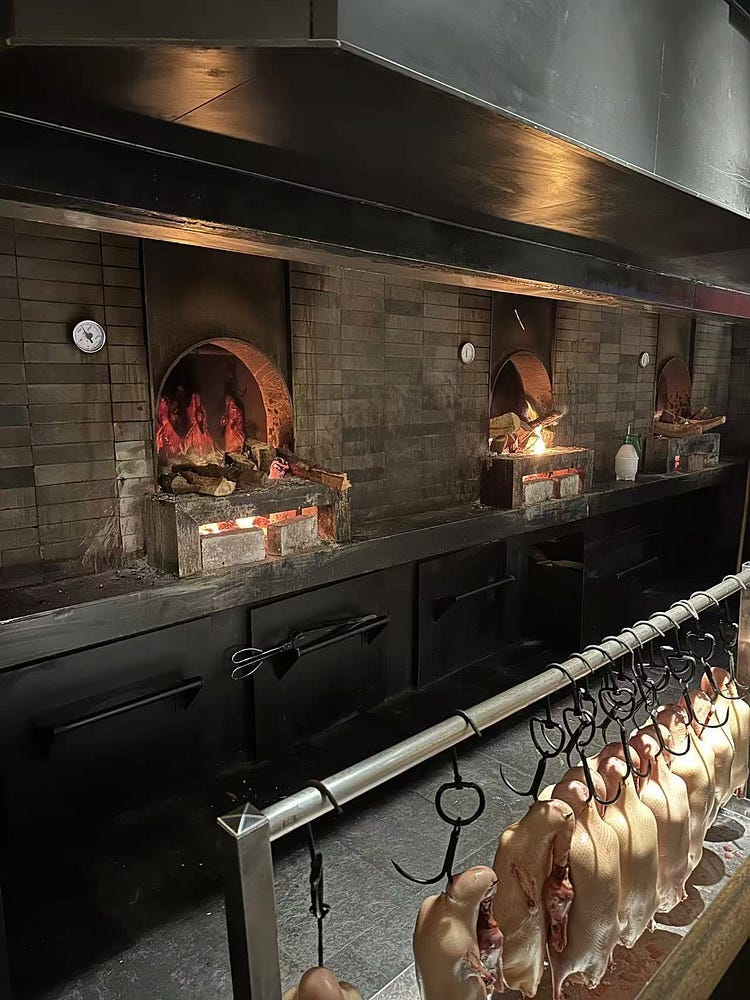
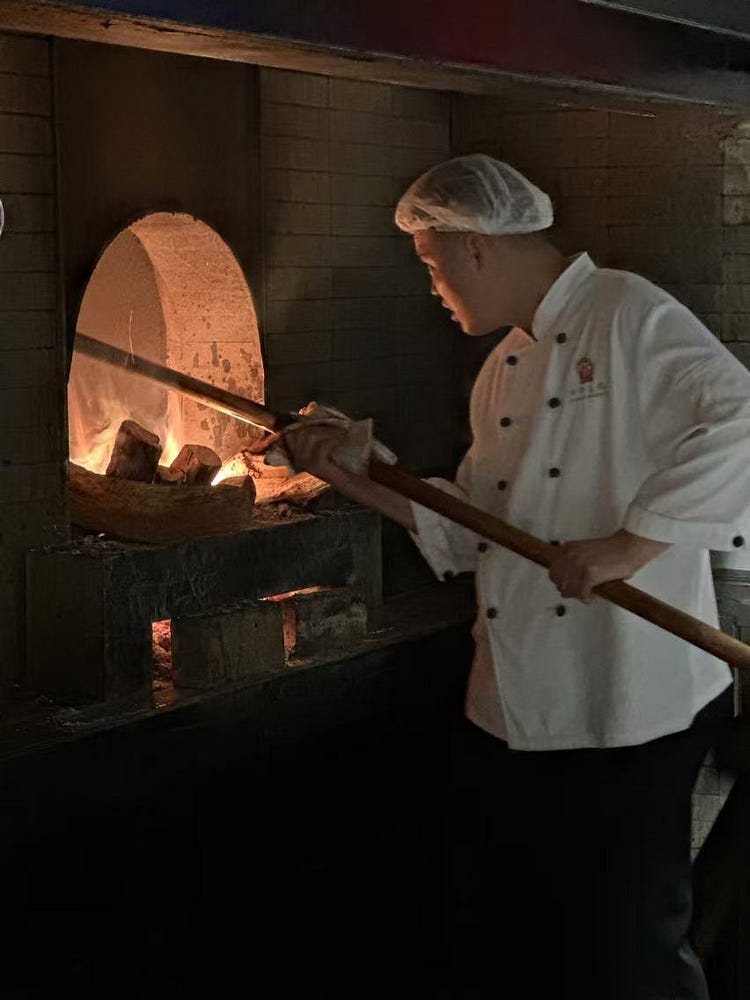

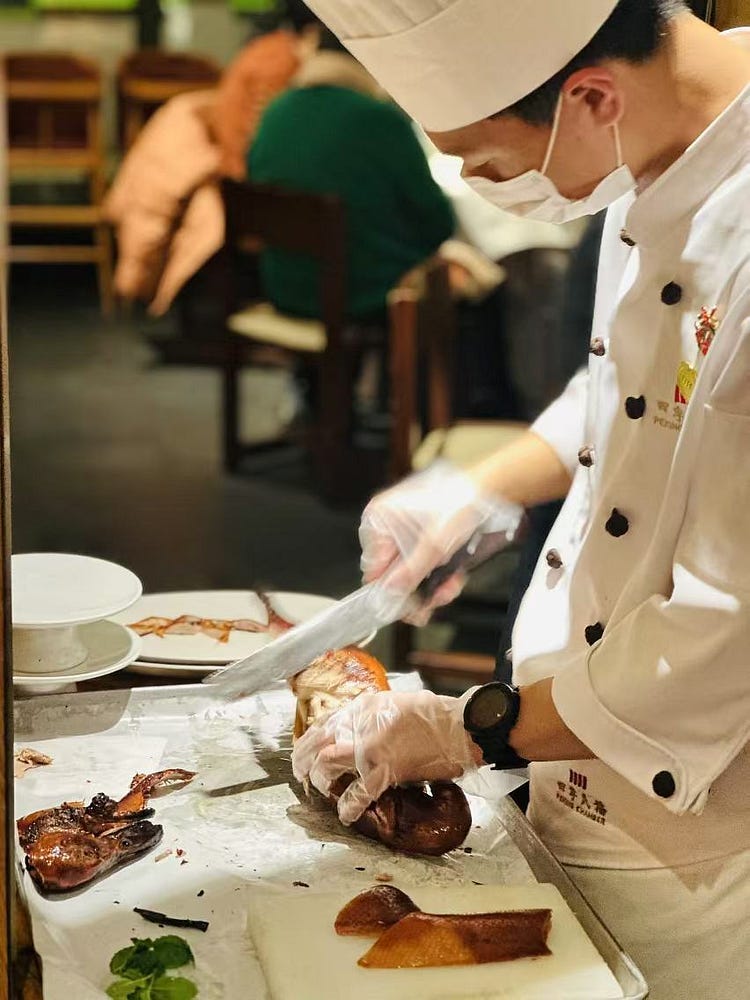
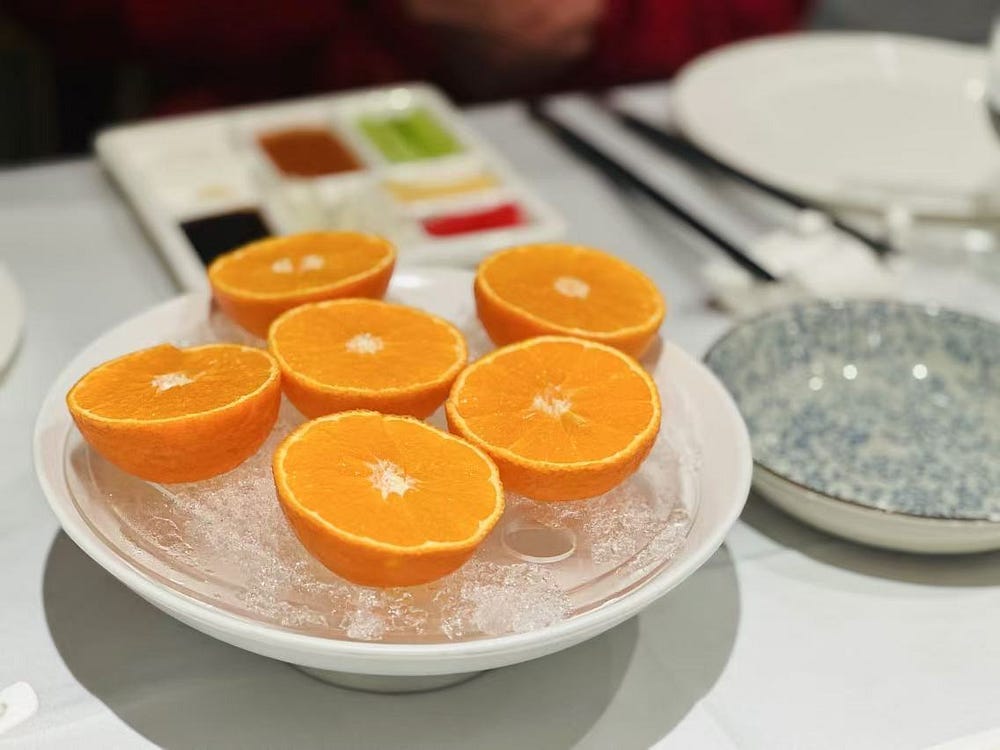
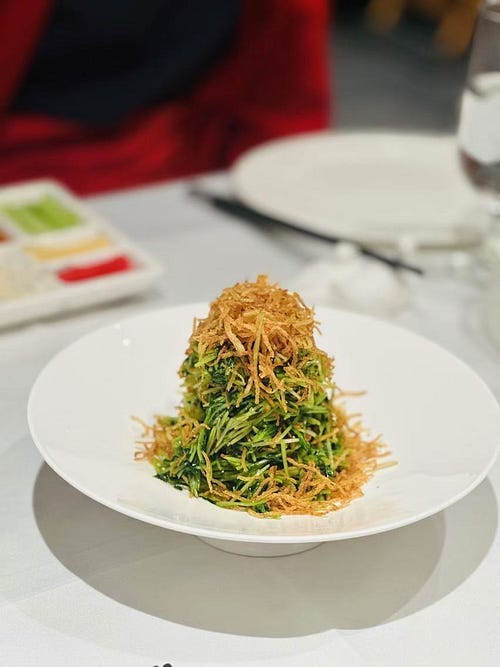


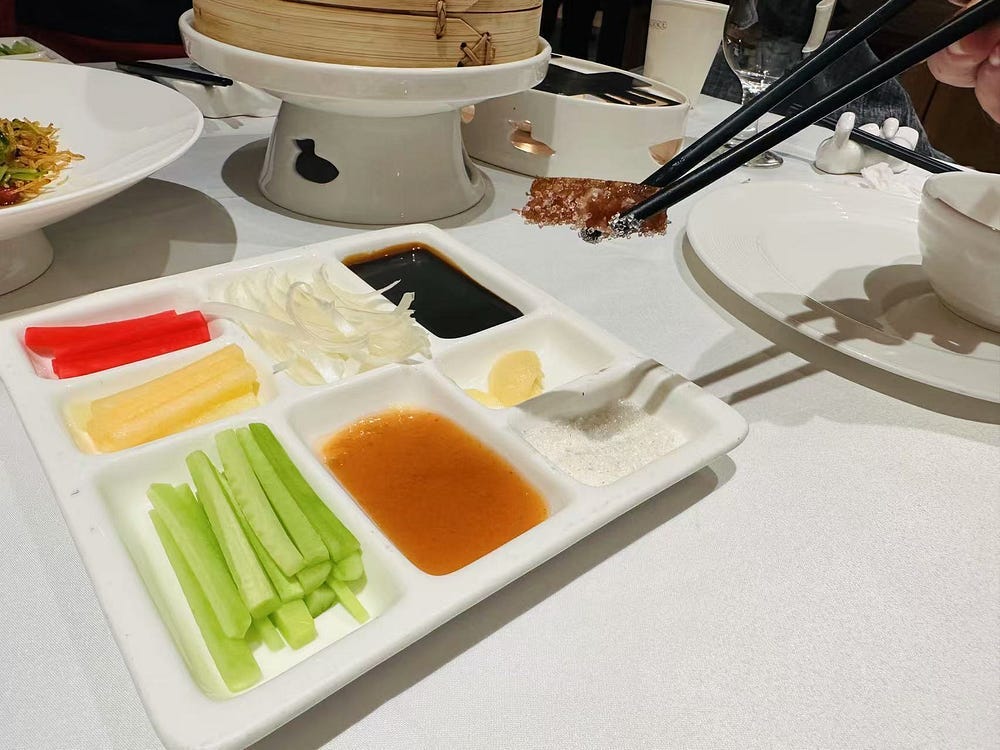

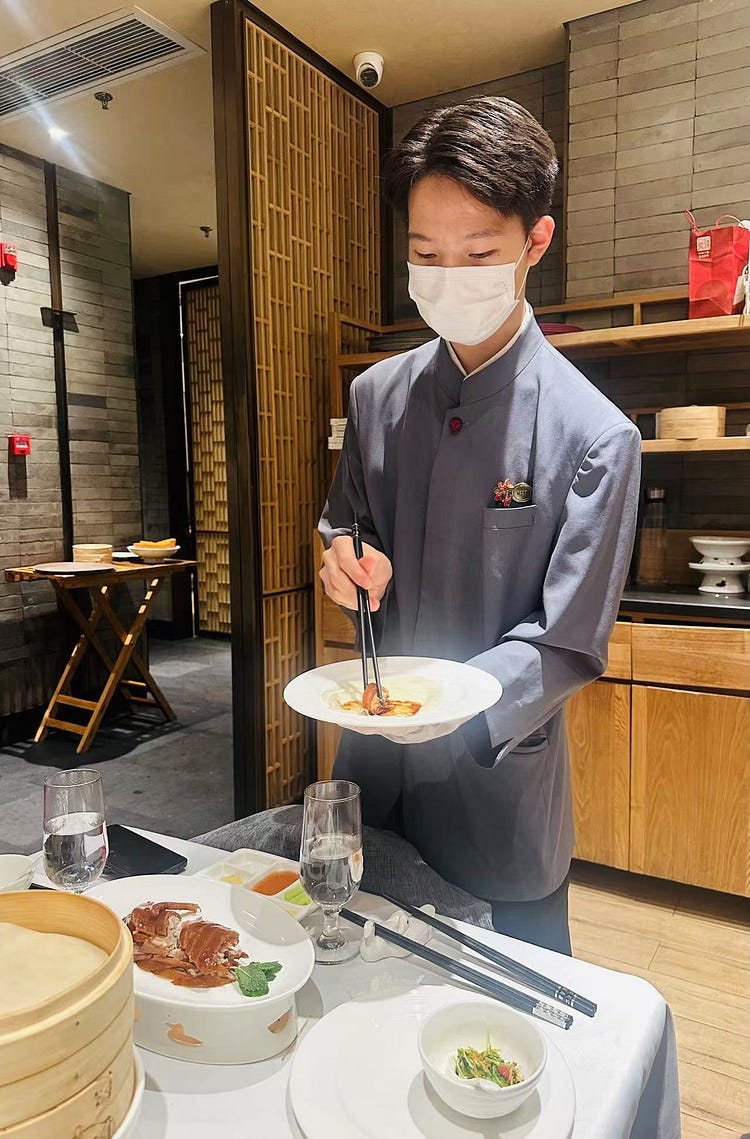
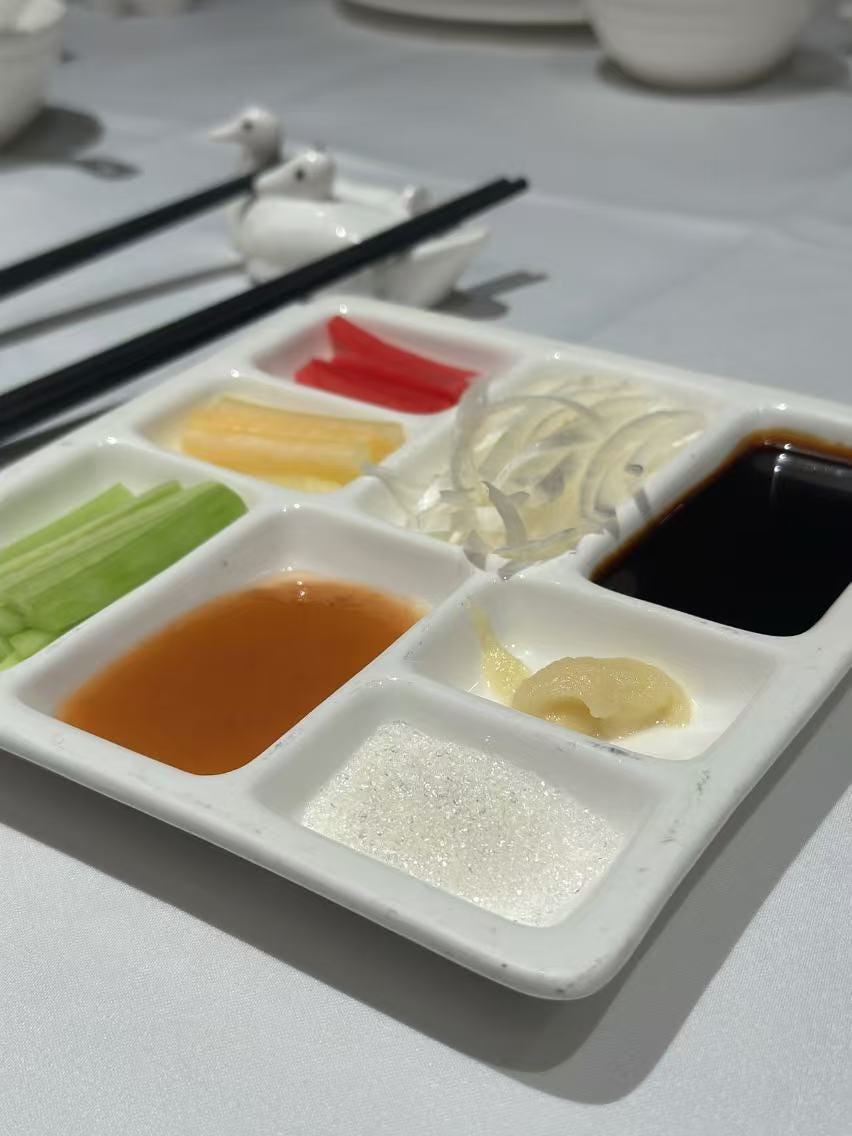
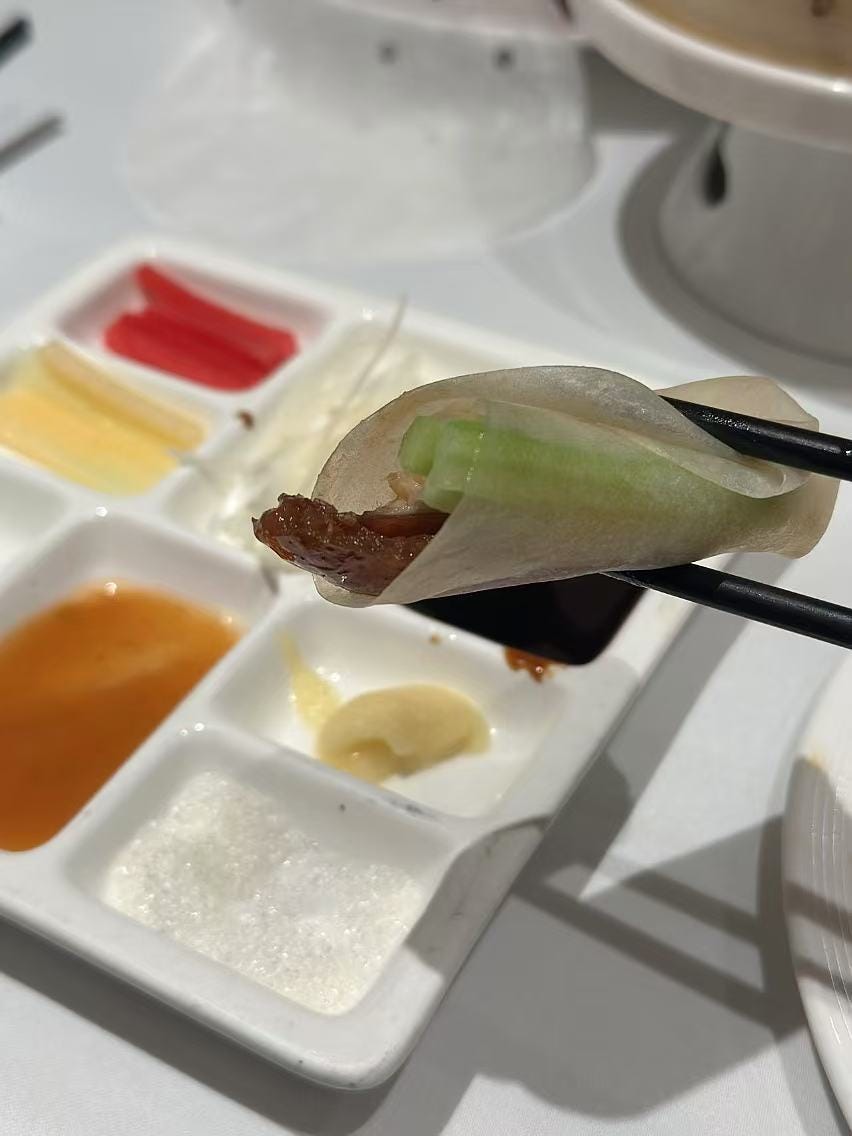
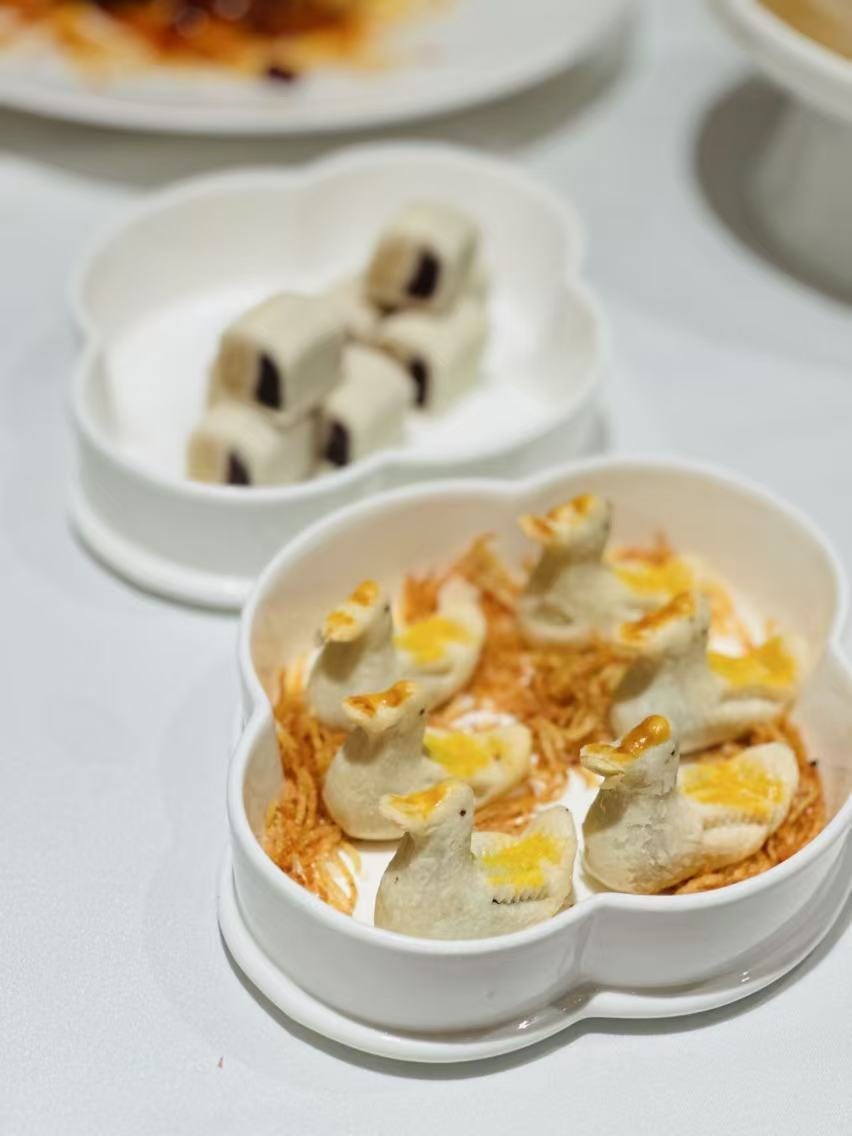
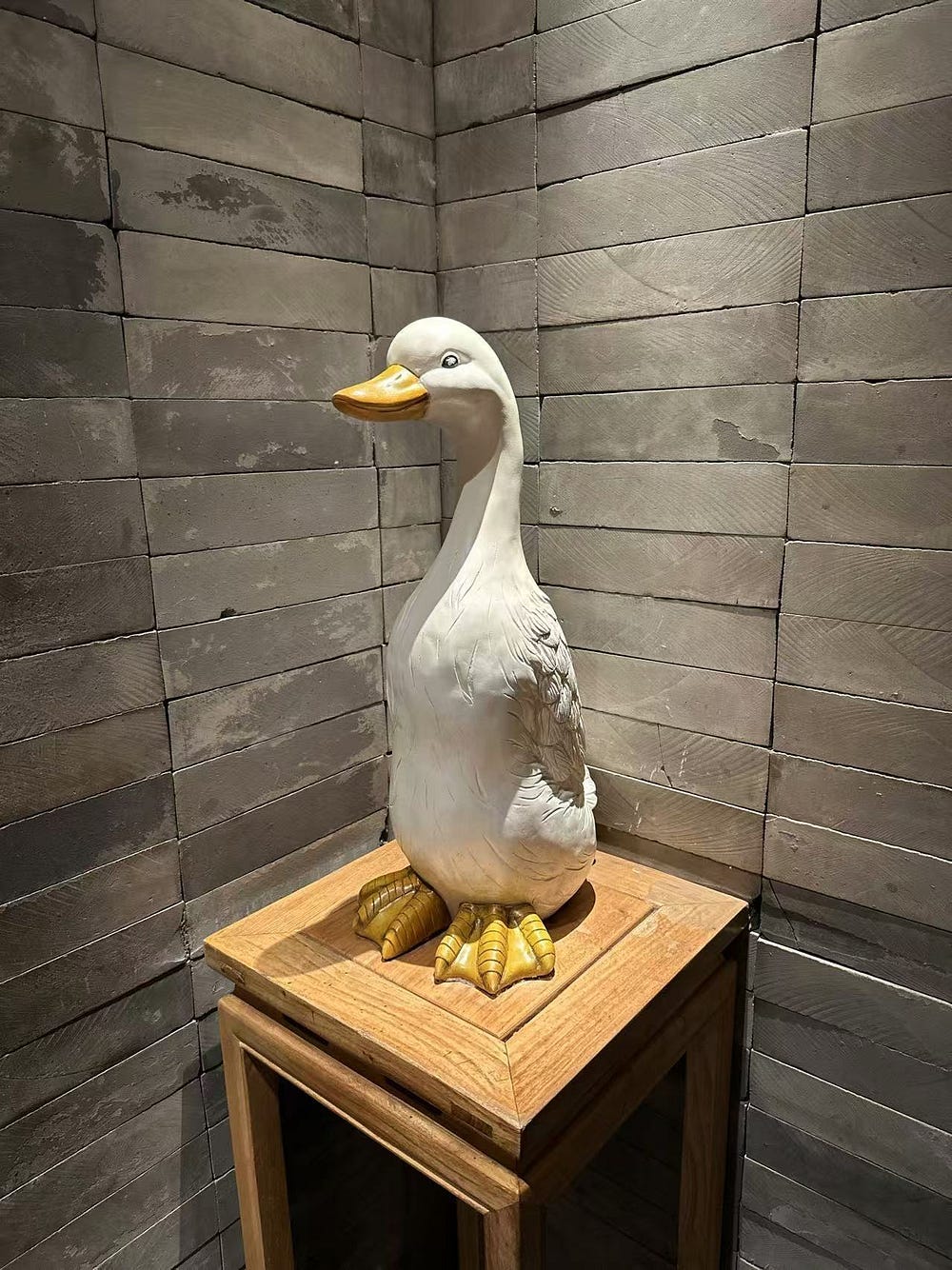
Really nice ! Make me think about Beijing and Beijing duck 🦆!
this post made me hungry and miss beijing :)) i loved reading it!